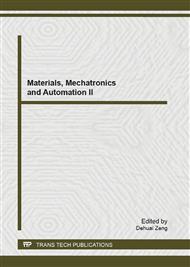p.739
p.745
p.750
p.755
p.759
p.765
p.772
p.778
p.782
Frost Heaving Soil Road Use Synthetic Adhesive Reinforcement Method
Abstract:
In many areas, there are still a development road construction materials, traditionally, often use reinforced concrete, asphalt and other adhesive method to strengthen the low strength of rock and soil anti-freeze expansion coefficient; And now all countries in the world are studying how to use industrial production waste development of new composite materials. One of the most development potential, the production of industrial waste - slime. This paper USES the Russian kazan national construction university experimental methods, in the experiment to improve frost heaving soil physical and mechanical properties of the method for the synthesis of adhesive, based on the feasibility and applicability, environmental assessment of research and analysis, for the use of adhesive put forward a lot of reference value.
Info:
Periodical:
Pages:
759-762
Citation:
Online since:
August 2013
Authors:
Price:
Сopyright:
© 2013 Trans Tech Publications Ltd. All Rights Reserved
Share:
Citation:


